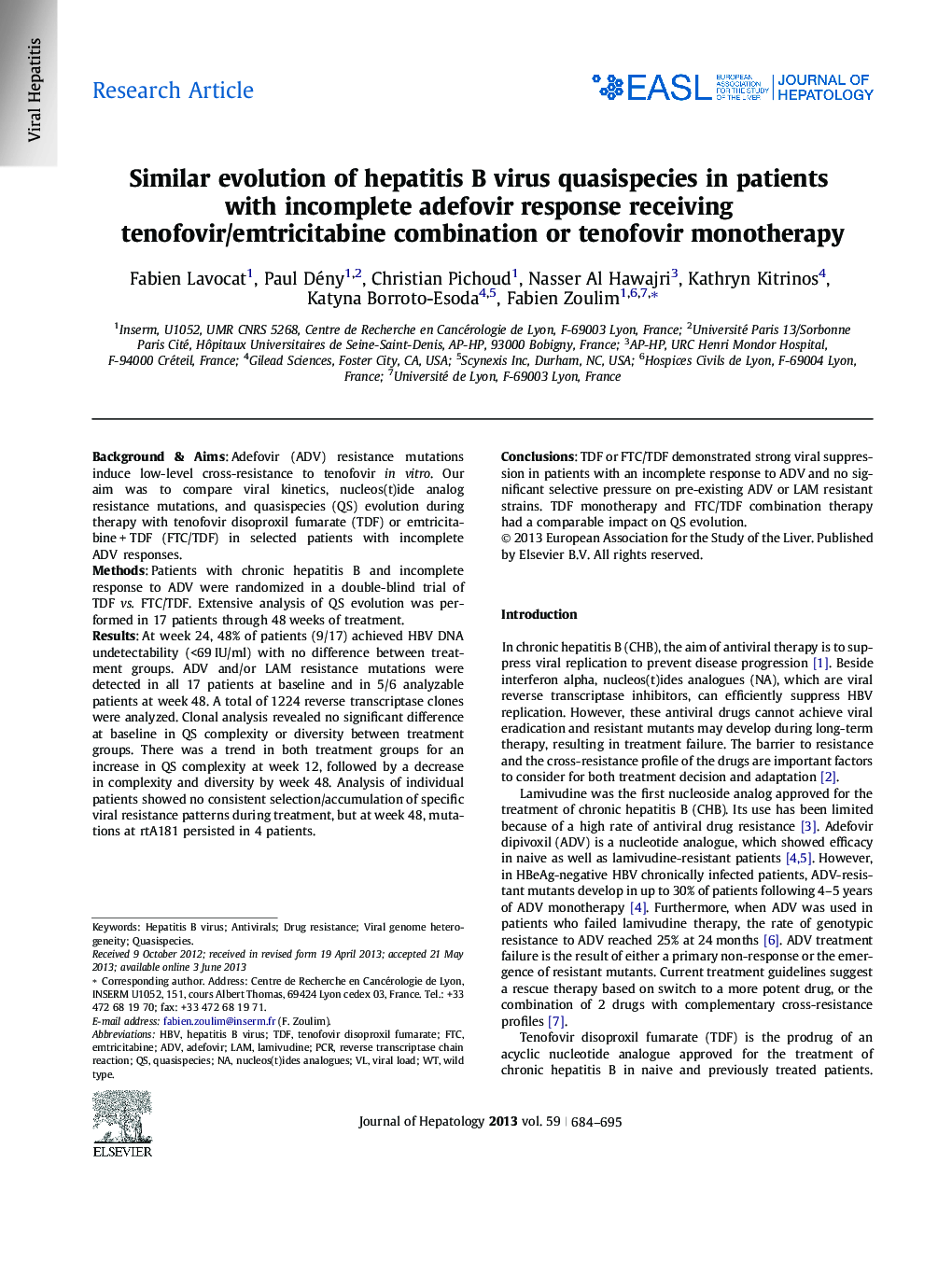| Article ID | Journal | Published Year | Pages | File Type |
|---|---|---|---|---|
| 6103767 | Journal of Hepatology | 2013 | 12 Pages |
Background & AimsAdefovir (ADV) resistance mutations induce low-level cross-resistance to tenofovir in vitro. Our aim was to compare viral kinetics, nucleos(t)ide analog resistance mutations, and quasispecies (QS) evolution during therapy with tenofovir disoproxil fumarate (TDF) or emtricitabine + TDF (FTC/TDF) in selected patients with incomplete ADV responses.MethodsPatients with chronic hepatitis B and incomplete response to ADV were randomized in a double-blind trial of TDF vs. FTC/TDF. Extensive analysis of QS evolution was performed in 17 patients through 48 weeks of treatment.ResultsAt week 24, 48% of patients (9/17) achieved HBV DNA undetectability (<69 IU/ml) with no difference between treatment groups. ADV and/or LAM resistance mutations were detected in all 17 patients at baseline and in 5/6 analyzable patients at week 48. A total of 1224 reverse transcriptase clones were analyzed. Clonal analysis revealed no significant difference at baseline in QS complexity or diversity between treatment groups. There was a trend in both treatment groups for an increase in QS complexity at week 12, followed by a decrease in complexity and diversity by week 48. Analysis of individual patients showed no consistent selection/accumulation of specific viral resistance patterns during treatment, but at week 48, mutations at rtA181 persisted in 4 patients.ConclusionsTDF or FTC/TDF demonstrated strong viral suppression in patients with an incomplete response to ADV and no significant selective pressure on pre-existing ADV or LAM resistant strains. TDF monotherapy and FTC/TDF combination therapy had a comparable impact on QS evolution.
